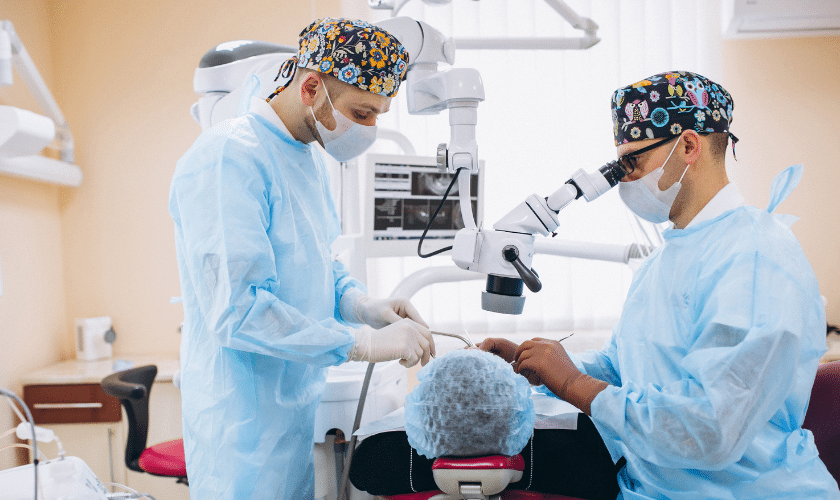Skin cancer is the most common form of cancer in the United States, affecting millions of Americans each year. While there are various treatment options available, Mohs Micrographic Surgery stands out as the gold standard in treating skin cancer due to its high cure rates and tissue preservation capabilities. In this blog post, we’ll delve into the details of Mohs Surgery, exploring its benefits, procedure, and why it’s considered the most effective treatment for skin cancer.
Understanding the Causes and Effects of Skin Cancer
Skin cancer is a serious condition that occurs when abnormal skin cells grow uncontrollably, often as a result of damage from ultraviolet (UV) radiation. Understanding the causes and effects of skin cancer is crucial for prevention, early detection, and effective treatment. Let’s explore the various aspects of skin cancer, including its causes, risk factors, types, and potential effects on health.
Causes of Skin Cancer
The primary cause of skin cancer is exposure to UV radiation, whether from the sun or artificial sources like tanning beds. UV radiation damages the DNA in skin cells, leading to mutations that can trigger uncontrolled cell growth and the development of cancerous tumors. Other factors that can increase the risk of skin cancer include:
- Fair Skin: People with fair skin, light hair, and light-colored eyes are more susceptible to skin damage from UV radiation.
- History of Sunburns: Multiple or severe sunburns, especially during childhood, can increase the risk of developing skin cancer later in life.
- Excessive Sun Exposure: Spending long periods in the sun, especially without protection, increases the risk of skin cancer.
- Use of Tanning Beds: Tanning beds emit UV radiation that can damage the skin and increase the risk of skin cancer.
- Personal or Family History: Individuals with a personal or family history of skin cancer are at higher risk.
- Weakened Immune System: A weakened immune system, such as from certain medications or medical conditions, can increase the risk of skin cancer.
Types of Skin Cancer
There are three main types of skin cancer, each arising from different types of skin cells and having varying levels of aggressiveness:
- Basal Cell Carcinoma (BCC): The most common type of skin cancer, BCC, typically appears as a small, shiny bump or a red, scaly patch. It grows slowly and is usually not life-threatening if detected and treated early.
- Squamous Cell Carcinoma (SCC): SCC often appears as a firm, red bump or a scaly patch that may crust or bleed. While usually not life-threatening if detected early, SCC can grow and spread to other parts of the body if left untreated.
- Melanoma: Melanoma is less common but more aggressive than BCC and SCC. It can develop from existing moles or appear as new, unusual-looking moles. Melanoma can spread rapidly to other parts of the body and can be life-threatening if not treated early.
Effects of Skin Cancer
The effects of skin cancer can vary depending on the type and stage of the disease. In the early stages, skin cancer may cause changes in the appearance of the skin, such as the development of new growths, changes in existing moles, or sores that do not heal. If left untreated, skin cancer can grow and spread to other parts of the body, leading to serious complications, including:
- Disfigurement: Advanced skin cancer may require extensive surgery to remove the affected tissue. This leads to scarring and disfigurement, especially if the cancer occurs on the face or other visible areas.
- Metastasis: Melanoma and, in rare cases, SCC can spread to other parts of the body, such as the lymph nodes, liver, lungs, or brain, leading to life-threatening complications.
- Emotional and Psychological Impact: Skin cancer diagnosis and treatment can have a significant emotional and psychological impact, causing stress, anxiety, depression, and fear of recurrence.
- Reduced Quality of Life: Skin cancer and its treatment can impact daily life, including work, social activities, and relationships, leading to a reduced quality of life for affected individuals.
Enter Mohs Micrographic Surgery
Skin cancer is a pervasive threat, affecting millions of individuals worldwide. Among the various types of skin cancer, basal cell carcinoma (BCC) and squamous cell carcinoma (SCC) are the most prevalent. While these cancers are typically localized and slow-growing, they can pose significant risks if left untreated, potentially metastasizing to other parts of the body.
Traditionally, the treatment of skin cancer involves surgical excision of the tumor, followed by histopathological examination to ensure complete removal. While effective to some extent, this approach often resulted in larger surgical margins and increased risk of damage to surrounding healthy tissue. Moreover, the recurrence rates were not negligible, prompting the need for more precise and efficacious treatment modalities.
Enter Dr. Frederic E. Mohs, a visionary dermatologic surgeon who revolutionized the field with his pioneering technique in the 1930s. Mohs Micrographic Surgery, also known as Mohs surgery or chemosurgery, represents a paradigm shift in the management of skin cancer. Unlike conventional methods, Mohs surgery offers real-time microscopic analysis of tissue margins. As a result, it allows for precise removal of cancerous cells while sparing healthy tissue to the greatest extent possible.
How Does Mohs Micrographic Surgery Work?
Here’s an expanded and more detailed explanation of how the Mohs procedure works:
- Initial Tumor Removal: The Mohs surgery begins with the surgeon removing the visible tumor along with a thin layer of surrounding tissue. This initial removal is done using local anesthesia to ensure the patient’s comfort.
- Tissue Mapping: After the tumor is removed, the excised tissue is carefully mapped and divided into sections. Each section is labeled and color-coded for identification purposes. This meticulous mapping is crucial for tracking the location of any cancerous cells.
- Microscopic Examination: The mapped tissue sections are then processed in the laboratory. Each section is frozen, sliced into thin layers, and mounted on slides. The slides are examined under a microscope by the Mohs surgeon.
- Precise Marginal Excision: If cancer cells are found at the edges of any tissue section, the surgeon precisely marks the location of these cells on the corresponding map. Using this information, the surgeon performs a precise marginal excision, removing an additional layer of tissue only from the areas where cancer cells were detected.
- Closure of the Wound: Once the Mohs surgery is complete and the margins are clear of cancer cells, the wound is typically closed using stitches. In some cases, a skin graft or flap may be required for larger wounds to ensure optimal healing and cosmetic outcomes.
- Postoperative Care: After the procedure, patients are provided with detailed instructions for wound care and follow-up appointments. It is essential to follow these instructions carefully to promote proper healing and reduce the risk of complications.
Benefits of Mohs Micrographic Surgery
Mohs Micrographic Surgery is renowned for its meticulous nature, setting it apart from other techniques and offering several key advantages:
- High Cure Rates: One of the most significant advantages of Mohs surgery is its impressively high cure rates. Studies have shown cure rates exceeding 99% for primary basal cell carcinoma (BCC) and up to 97% for squamous cell carcinoma (SCC), even in cases of recurrent or aggressive tumors.
- Tissue Preservation: Unlike traditional surgical methods, Mohs surgery is designed to remove only cancerous tissue while preserving healthy surrounding tissue selectively. This targeted approach minimizes scarring and functional impairment, particularly in cosmetically sensitive areas like the face.
- Enhanced Cosmetic Outcomes: The precise nature of Mohs surgery allows for optimal preservation of the patient’s natural appearance. This is particularly important for tumors located on the head, neck, and other aesthetically important areas. Mohs surgery is known for its ability to remove cancerous tissue while minimizing the impact on the patient’s appearance. This leads to enhanced cosmetic outcomes compared to traditional surgical methods.
- Single-Day Procedure: In most cases, Mohs surgery can be completed in a single outpatient visit. This is because the process of removing, examining, and, if necessary, re-excising tissue is done on-site, allowing for real-time analysis and treatment. This streamlined approach not only minimizes inconvenience for patients but also reduces overall healthcare costs by eliminating the need for multiple visits and procedures.
The journey through the world of Mohs Micrographic Surgery has been nothing short of enlightening. From its humble beginnings to its status as the gold standard in skin cancer treatment, Mohs surgery has transformed the lives of countless individuals worldwide. With its unrivaled precision, high cure rates, and superior cosmetic outcomes, Mohs surgery represents a beacon of hope for patients and dermatologists alike. As we navigate the ever-evolving landscape of dermatologic oncology, one thing remains clear: Mohs Micrographic Surgery continues to shine brightly as a symbol of progress, innovation, and healing.

